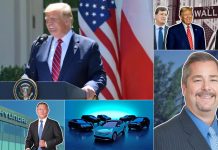Have you ever made the drive from Los Angeles to New York? If you have or have ever thought about making the trip, how would you feel if you never set your hands on the wheel? In late October 2016, Elon Musk made the boldprediction that his fleet of Tesla vehicles would pick someone up from their residence in Los Angeles, and drop them off in New York without the need for a single charge by the end of 2017. Many were skeptical about his claim, but Musk was confident since his Tesla vehicle was planned to be outfitted with powerful sensors, an updated computer system, GPS, and inertial measurement unit to aid in object detection. All Model S, X, and 3 sedans were predicted to include this updated technology.
However, the CEO has walked back this prediction. In early August 2017, Musk lowered expectations by delaying the cross-country road trip and remarked that if it were not by the end of the year than it would be close to that original date. Additionally, after some recent production and financial problems in 2017’s third quarter. In October 2017, approximately a year after his lofty prediction, Musk discussed another issue that would likely delay a cross-country trip in a Tesla vehicle.
Computer upgrades to meet regulatory requirements will be required for Tesla to even think about a self-autonomous vehicle safely traveling that far. Considering the number of shake-ups in Tesla’s team, and a production process that is almost at a standstill, a computer upgrade for vehicles the company has produced this year seems highly unlikely. While Tesla is undergoing some significant changes, other manufacturers are looking to bring fully autonomous vehicles to the forefront and defy estimates that self-driving cars will be fully accessible to consumers in 2040.
Toyota
In September 2017, Toyota raised the curtain on their efforts toward a fully functioning autonomous vehicle. It is a next-generation self-driving car that will be tested on closed roads in Silicon Valley, Ann Arbor, Michigan, and Cambridge, Massachusetts with the intention of eventually driving them on public roads. Toyota has teamed up with Luminar, a Silicon Valley startup that has developed LiDAR, a critical piece of sensing technology to create an accurate 3D map of objects that are around the car. Toyota is building two modes of autonomy for their vehicles, “Chauffer” a mode meant to aid an aging population and people with disabilities. The second mode, “Guardian” will allow the driver to navigate like usual, and the car’s autonomous technology will step in to avoid accidents. Projections for when this will be available to the public have not yet been solidified.
Ford
Ford is taking a bit of a different path to the development of the autonomous vehicle. In September 2017, the carmaker announced that they would be partnering with Lyft to deploy their fully autonomous Ford Fusion, a project that would likely be ready in 2021. The Ford Fusion would communicate with Lyft’s ride-hailing app to service as many customers as possible. While Ford is planning to increase consumer trust in autonomous vehicles through a partnership with Lyft, the manufacturer is projecting to release self-driving cars to the public in 2025. The goal is for the Fusion to be fully autonomous in every sense of the word: no pedals or a steering wheel, encouraging full trust in a machine. Ford will make this possible by using LiDAR, radar, and cameras to collect data that optimizes the self-driving experience.
Volkswagen
In March 2017, Volkswagen introduced the world to Sedric, their futuristic autonomous concept vehicle. They are shooting for a level 5 autonomous level driving by removing the cockpit of the car and going for full passenger space. While manufacturers like General Motors and Jaguar Land Rover are partnering with ride-hailing services to make a splash, the VW Group is joining with Mobvoi, a smartwatch maker. The company is tasked with developing the AI digital interface that will be used in Sedric. VW is also toeing the line between marketing Sedric as a mobility vehicle that could be used for public transportation or a car that could be owned by an individual. While Sedric will undoubtedly undergo some changes, VW plans to become a leader in e-mobility by 2018, so the public could be introduced to Sedric sooner rather than later.
Even through Tesla’s shaky and unpredictable history of self-driving cars, Musk’s commitment to innovating on this technology has brought a concept many thought would not occur until 30 to 40 years from now to something the public could experience in less than five years. In addition to Toyota, Ford, and Volkswagen; Audi, Nissan, and BMW are all planning to develop vehicles with autonomous technology in the next few years. The cross-country drive may occur a little later than Tesla projected, but as it stands, it might be a competitor making the trip.








